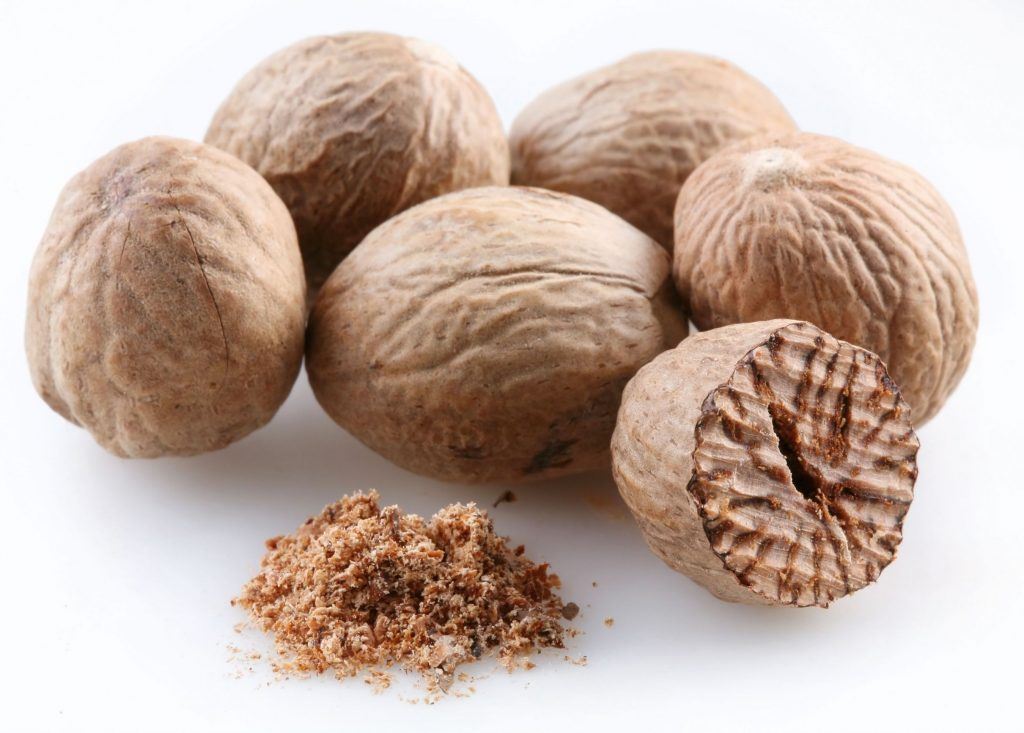Nutmeg and Mace (Myristica fragrans) come from the same seed. Mace is the outer covering of the nutmeg. Nutmeg and lettuce soup is very good for depression and nervous disorders.
Mace is an antiseptic and is delicious in sweet dishes. Sprinkle nutmeg and mace on cooked fruit, use with cinnamon in sweet dishes, or grate onto potatoes, cabbage, onions, or leeks. The effect is generally warming and soothing. Together they are supposed to be an aphrodisiac, but be aware that in large quantities they can be hallucinatory.
Nutmeg encourages menstruation and can be abortive in large quantities — therefore avoid it during pregnancy.
Text Source: The Complete Home Guide to Herbs, Natural Healing, and Nutrition
Nutmeg is a fruit of a plant that grows in tropical regions.
The tree of Nutmeg is between 8 and 10 meters high.
This tree holds a fruit that looks like a small peach and it has the Nutmeg seed inside it.
Nutmeg is used in a powder form in the kitchen but in very little quantities to give the food a special additional taste.
And Nutmeg is mostly used when you are cooking or preparing something that contains egg.
Nutmeg in Italian Cuisine:
We probably have the Venetians to thank for making nutmeg, along with other Eastern spices, available in Italy, but it is in Bolognese cooking that it has put its most tenacious roots.
Nutmeg is indispensable to Bolognese meat sauce, and to the stung for its homemade pasta. It is used elsewhere too, such as in sauces with spinach and ricotta, in certain savory vegetable pies, in some desserts.
One must use it carefully because, if a shade too much is added, the warmth of its musky (avor is lost in a dominant sensation of bitterness.
Use only whole nutmegs, which you can store in a tightly closed glass jar in a kitchen cabinet. Grate the nutmeg when needed, easily done on its special, small, curved grater.
Source: Essentials of Classic Italian Cooking Book
